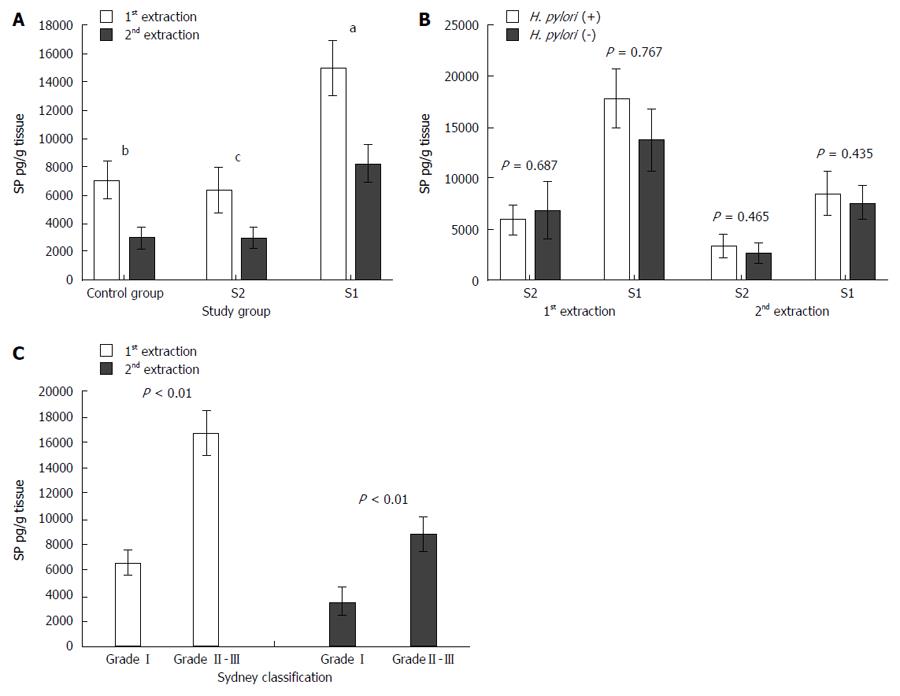Copyright
©The Author(s) 2016.
World J Gastroenterol. Oct 7, 2016; 22(37): 8349-8360
Published online Oct 7, 2016. doi: 10.3748/wjg.v22.i37.8349
Published online Oct 7, 2016. doi: 10.3748/wjg.v22.i37.8349
Figure 2 Substance P levels in the control (n = 30) and study (n = 52) groups.
A: Substance P (SP) levels were significantly higher in the gastric mucosa from sites with severe gastritis (S1) (a) than in the control group in both the first and second extractions (b) (P = 0.001 and 0.004, respectively). SP levels were significantly higher in S1 (a) sites than in areas with less severe gastritis (S2) (c) in both extractions (P = 0.006 and 0.001, respectively). However, there were no significant differences in the SP levels between the S1 and S2 samples in both the first and second extractions (P = 0.81 and 0.99, respectively); B: There were no significant differences in the SP levels between H. pylori (+) and H. pylori (-) patients; C: SP levels were significantly higher in patients with high-grade gastritis. H. pylori: Helicobacter pylori.
- Citation: Islek A, Yilmaz A, Elpek GO, Erin N. Childhood chronic gastritis and duodenitis: Role of altered sensory neuromediators. World J Gastroenterol 2016; 22(37): 8349-8360
- URL: https://www.wjgnet.com/1007-9327/full/v22/i37/8349.htm
- DOI: https://dx.doi.org/10.3748/wjg.v22.i37.8349









